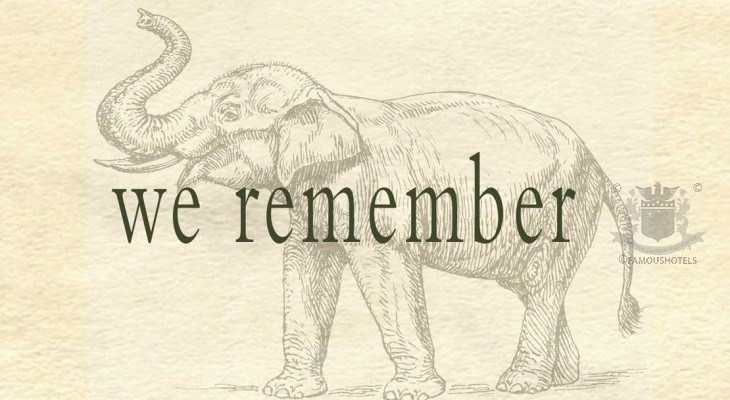Hoshi Ryokan: The World’s Oldest Guest House
( words)
Ryokan: guesthouse or inn; a ryokan, is a type of traditional Japanese inn which became a common Japanese institution during the Edo period (1603–1868), when they served travelers along Japan's highways. They typically feature tatami-matted rooms, communal baths, and other public areas where visitors may wear yukata and talk with the owner.
This Ryokan has been in operation for over 1,300 years dating back to its opening in 718; the guesthouse has been run by the same family for 46 generations. The Ryokan has evolved through the centuries. Today, it offers a hundred rooms and can accomodate up to 450 guests. Guests are welcomed with a traditional Japanese tea ceremony. For relaxation, guests can walk through the traditional Japanese gardens or slip into their ‘yukata’, a cotton kimono, provided for their use after soaking in either the indoor or outdoor hot springs.
According to legend, the god of Mount Hakusan visited a Buddhist priest, telling him to uncover an underground hot spring in a nearby village. The hot spring was found, and the priest requested that his disciple, a woodcutter’s son named Garyo Saskiri, build and run a spa on the site. His family, known as Hoshi, have run a hotel in Komatsu ever since; the current structure houses 450 people in 100 rooms. Zengoro Hoshi is the current patriarch.
Following this idea, each room in the Ryokan has been given a poetic name by Hoshi. An "Emmeikaku", guest house built in the garden, can be found in the Ryokan as well, with walls and ceilings being nicely decorated with red checked patterns from the Hokuriku area. Upon his arrival, the new coming guest is garbed in a "Yukata", the japanese traditionnal cotton kimono, introducing a relaxing stay where anyone can get rid of his stress. This is the way the Ryokan Hoshi fulfils the wishes of its guests, in respect to the traditionnal and historical japanese hospitality, inherated from fourty-six generations of owners, paying attention to an absolute bliss.
HISTORY
Taicho Daishi (great teacher of Buddhism) Guided by logger Gengoro Sasakiri, in 717 noted priest Taicho hiked high up Mt. Hakusan, a sacred and isolated mountain. While Taicho was asleep one night after beginning his rigorous training exercises, the deity of Hakusan appeared in his dream, saying:
"Lying 20-24 kilometers from the base of the mountain is a village called Awazu. There, you'll find an underground hot spring with wondrous restorative powers that Yakushi Nyorai (the Physician of Souls) has bestowed upon it. The people of the village, however, do not known of this good fortune. Descend the mountain and head to Awazu. With the people of the village unearth the hot spring-it will serve them forever."
As he had been commanded, Taicho made his way down to the village and sought the help of its people in uncovering the treasure that lay beneath the earth's surface. He had the sick immerse themselves in its waters-and their health was immediately restored. Taicho then ordered Garyo Houshi, his disciple, to build and run a spa at the site.
After fulfilling the commands of the deity, Taicho continued with his intensive training and experienced satori (a state of intuitive illumination). Rumors of his occult powers even found their way to the Imperial Court in Nara, helping make Taicho the respected Etsu no Daitoku. (Great Man of Virtue from Etsu). As this story reveals, the origins of Houshi-now the oldest inn in the world-are truly divine.
Taicho Daishi (great teacher of Buddhism). Guided by logger Gengoro Sasakiri, in 717 noted priest Taicho hiked high up Mt. Hakusan, a sacred and isolated mountain. While Taicho was asleep one night after beginning his rigorous training exercises, the deity of Hakusan appeared in his dream, saying:
"Lying 20-24 kilometers from the base of the mountain is a village called Awazu. There, you'll find an underground hot spring with wondrous restorative powers that Yakushi Nyorai (the Physician of Souls) has bestowed upon it. The people of the village, however, do not known of this good fortune. Descend the mountain and head to Awazu. With the people of the village unearth the hot spring-it will serve them forever."
As he had been commanded, Taicho made his way down to the village and sought the help of its people in uncovering the treasure that lay beneath the earth's surface. He had the sick immerse themselves in its waters-and their health was immediately restored. Taicho then ordered Garyo Houshi, his disciple, to build and run a spa at the site.
After fulfilling the commands of the deity, Taicho continued with his intensive training and experienced satori (a state of intuitive illumination). Rumors of his occult powers even found their way to the Imperial Court in Nara, helping make Taicho the respected Etsu no Daitoku. (Great Man of Virtue from Etsu). As this story reveals, the origins of Houshi-now the oldest inn in the world-are truly divine.
Garyoism is the spirit of Garyo, and for 46 generations it has welcomed visitors to Houshi.
Generation after generation, Houshi proprietors have borne the name Zengoro Houshi. The first Zengoro was Garyo Houshi, the second son of Gengoro Sasakiri, who guided Taicho Daishi to the top of Mt. Hakusan.
Many people suffering from illnesses of one kind or another visited the spa built by Garyo Houshi, and he welcome them from his heart. People began making donations to the magical spa and to Garyo Houshi for his services. He then used these funds to expand the services he provided. The number of visitors to the spa gradually increased and the hotel grew. The present proprietor is the 46th Zengoro and with him the traditions of Garyoism live on.






